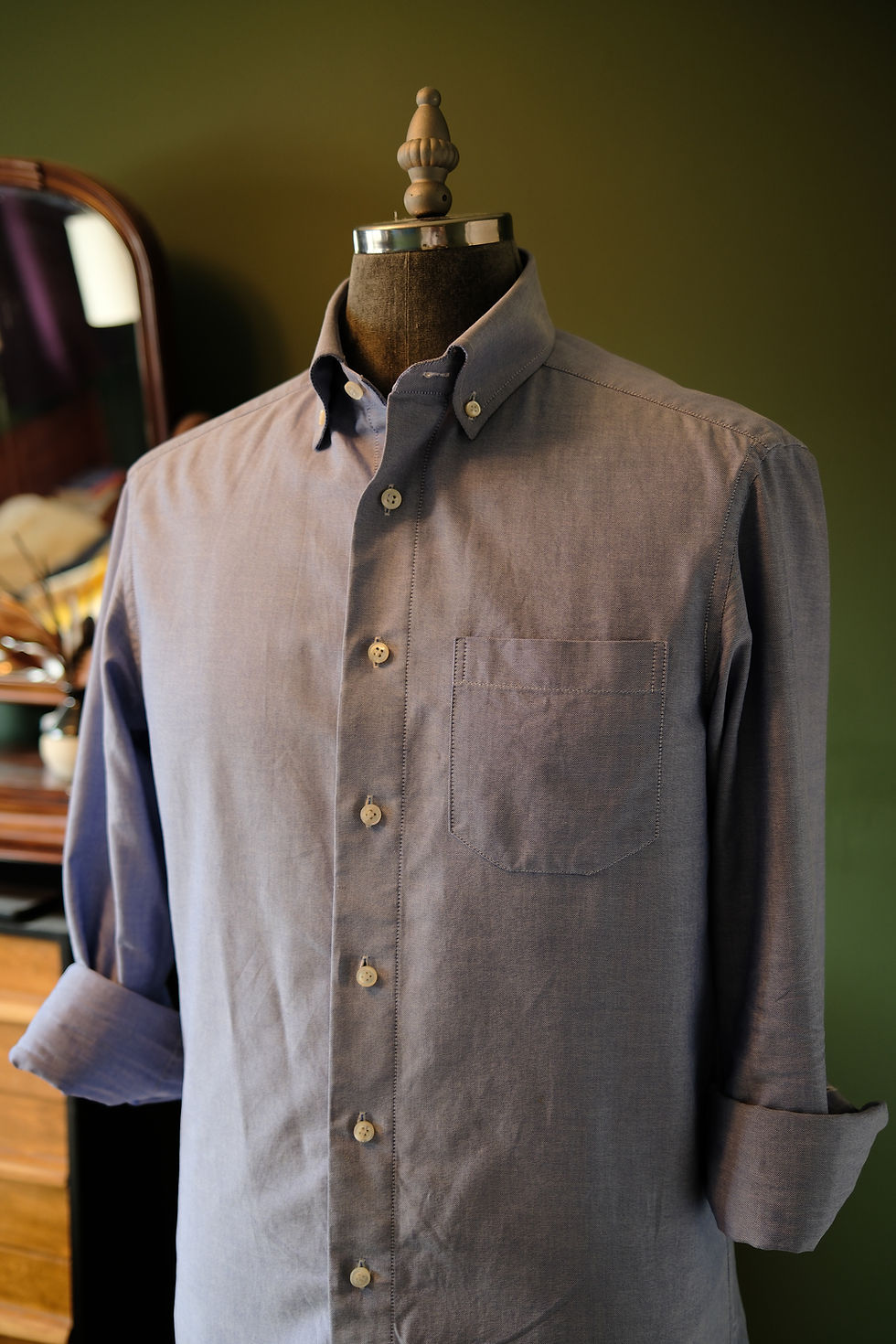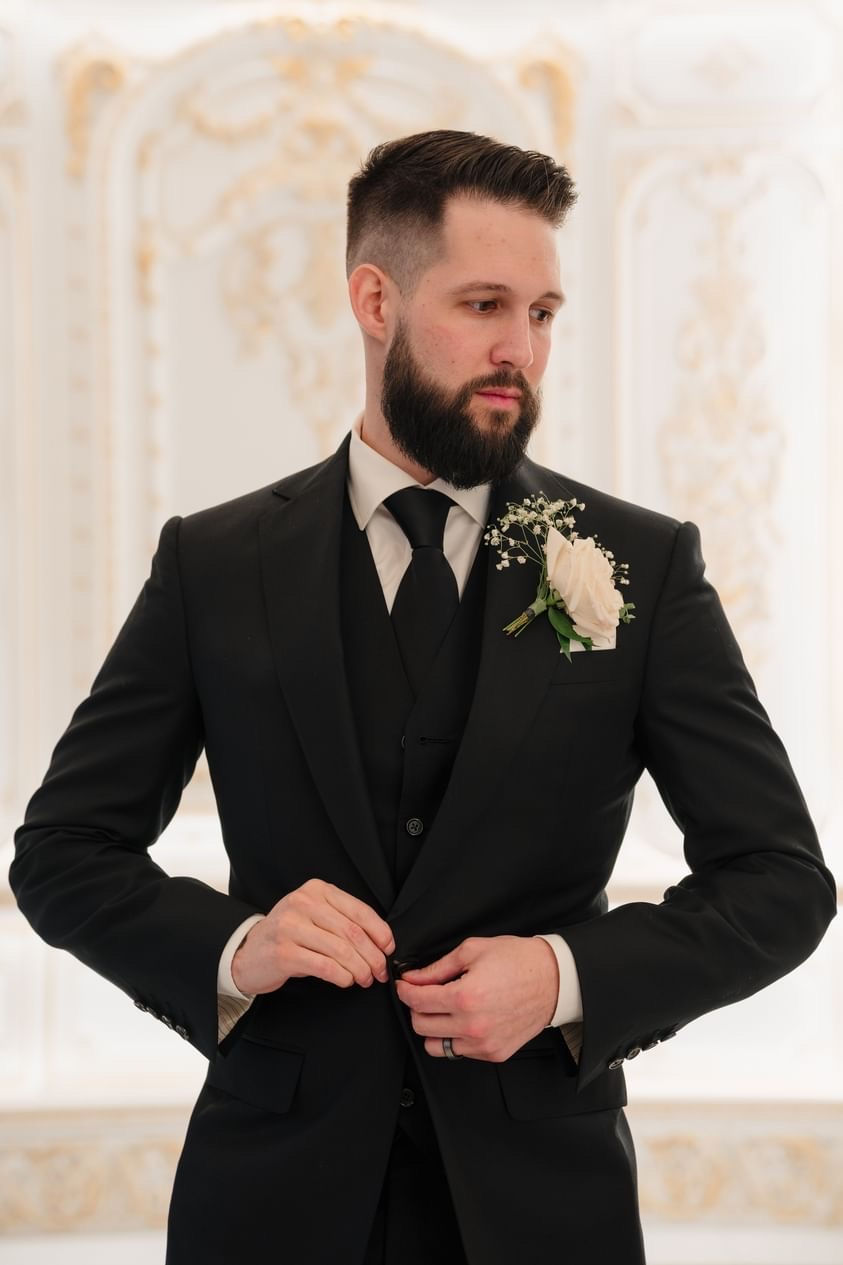The Journey of a Bespoke Suit: From Fabric to Final Fitting
- Allan Sinclair
- Dec 1, 2024
- 3 min read
Updated: May 6
The bespoke suit is more than just clothing—it is an experience, a collaboration, and a work of art. Unlike ready-to-wear or made-to-measure alternatives, a bespoke suit is crafted from the ground up to fit the client’s unique physique, posture, and personality. The journey of creating a bespoke suit is a fascinating blend of tradition, craftsmanship, and innovation. Let’s walk through this remarkable process step by step.
1. The Initial Consultation: A Meeting of Minds
The bespoke journey begins with a conversation. During the initial consultation, the tailor seeks to understand the client’s needs, lifestyle, and personal preferences. Is the suit for business, a wedding, or a special event? What styles and fabrics resonate with the client’s taste?
This stage is about more than measurements—it’s about connection. Tailors assess posture, discuss stylistic elements, and recommend fabrics. It’s here that the foundation of the suit is laid, ensuring it will not only fit perfectly but reflect the wearer’s identity.
2. Selecting the Fabric: The Canvas of Sartorial Art
Fabric selection is a critical step in the bespoke process. Clients browse through swatches of the finest materials from renowned mills. Wool, linen, cashmere, and silk blends are just the beginning. Each fabric has a story—its weave, weight, and drape affect the suit’s final appearance and performance. This step allows the client to infuse their suit with personality. A sharp pinstripe might signal authority, while a soft flannel evokes warmth and elegance. The selected fabric becomes the canvas on which the tailor will craft their masterpiece.
3. Pattern Creation: Precision and Personalization
Once the fabric is chosen, the tailor begins drafting a unique pattern. Bespoke patterns are entirely custom, unlike the standardized templates used in ready-to-wear and made-to-measure. They account for every nuance of the client’s body: shoulder slope, posture, and balance.
This pattern is meticulously drawn, cut, and preserved for future use. It evolves with the client, adapting to changes in physique or style preferences, making each bespoke suit part of a long-term sartorial relationship.
4. The Skeleton Baste Fitting: The First Glimpse
The initial fitting, known as the skeleton baste fitting, is where the garment takes its first form. At this stage, the suit is loosely assembled with large hand-sewn stitches, allowing easy adjustments. The client tries on the garment, and the tailor meticulously evaluates the fit and balance.
This is a crucial phase where adjustments are made to the shoulders, chest, and overall silhouette. Clients also get a sense of how the suit will look and feel, making this fitting an exciting moment in the process.
5. The Forward Fitting: Refining Perfection
After the skeleton baste fitting, the tailor reassembles the suit with adjustments made during the first fitting. This stage, known as the forward fitting, is where the garment begins to take its final shape.
Details like sleeve length, trouser break, and lapel roll are fine-tuned. The tailor continues to assess the client’s posture and balance to ensure the garment’s lines flow harmoniously. It’s a delicate dance of precision and artistry.
6. Finishing Touches: The Art of Handcraft
With the fit perfected, the tailor devotes hours to the finishing touches. Buttonholes are hand-stitched, linings are carefully inserted, and seams are pressed to perfection. Details like pick stitching, functional sleeve buttons, and monograms are added to elevate the suit’s elegance.
This stage is a testament to the tailor’s skill and dedication. Here, the suit transitions from a mere garment to a masterpiece.
7. The Final Fitting: A Suit That Feels Like Home
The final fitting is the culmination of weeks of work. The client tries on the finished suit, and the tailor ensures every detail is flawless. Adjustments at this stage are rare, as the earlier stages have already refined the fit to perfection.
Clients often express amazement at how the suit feels—like a second skin. The bespoke suit’s hallmark is its ability to provide unparalleled comfort and confidence.
8. A Legacy of Craftsmanship
Once complete, the bespoke suit becomes a part of the client’s sartorial arsenal. Unlike mass-produced garments, it is built to last and can be altered over time to accommodate changes in size or style.
For many, a bespoke suit is not just clothing; it’s an investment in themselves. It is a declaration of individuality, a celebration of craftsmanship, and a connection to a timeless tradition.
A bespoke suit’s journey is as unique as the person wearing it. Every step is imbued with artistry and care, from the initial consultation to the final fitting. It’s a process that celebrates individuality, ensures perfection, and upholds the highest tailoring standards. So the next time you see someone wearing a bespoke suit, remember: they’re not just wearing a piece of clothing—they’re wearing a story.
Understanding the bespoke process is just the beginning. To ensure your suit is genuinely bespoke and not merely made-to-measure, explore our guide on the Five Fundamentals of Bespoke.
Allan David



